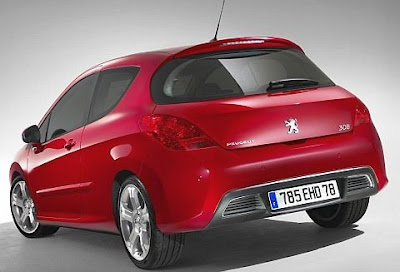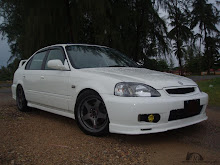
If you visited the Naza-Kia stand at the KL International Motorshow in 2006, you would have seen a concept MPV called the ‘Multi-S’. By then, Kia had already decided the Rondo would be the next generation of the Carens, a model which was adapted by Naza-Kia to be the Naza Citra in 2005. At that time, it was unknown if Kia would let Naza-Kia adapt the next generation of the Carens as a continuation of the Citra line or the Citra (second generation Carens) would remain in production for some time. 
Kia Multi-S concept MPV at KLIMS 2006
As it turns out now, both approaches have been taken: Kia has provided Naza-Kia with the rights to adapt the 3rd generation Carens (also known as Rondo in the US market) into a model called the Citra II Rondo and at the same time, the original Citra will still be assembled and sold alongside the new generation (also assembled locally).
The decision to continue selling the original Citra is because it is priced lower than the new Citra II and it has been Naza’s best-selling model, averaging almost 700 units a month in 2007 and about 600 units a month this year. The Citra II is a notch up in image and costs more so Naza-Kia reckons that it can extend its reach a bit further upmarket while maintaining its share of the lower end of the compact MPV market.

Citra I will still be on sale alongside Citra II
"Steady sales of the Citra have proven that Naza-Kia‘s 7-seaters are popular choices for Malaysian customers. To further increase customer choice in this segment, Naza-Kia is adding the new Citra II Rondo, positioned between the Citra and Ria, to be a serious contender in the crossover segment," said SM Nasarudin, CEO of the Naza Group of Companies, at the launch this morning.
It was very refreshing to note that the Naza CEO had no issues about the association with the Kia product, even acknowledging it in his speech – a great contrast to the mentality of a certain very senior person in the company in 2005 who demanded that an article (written by me) on the Citra be amended to exclude any suggestion that the Citra was related to the Carens, asserting that it is ‘a unique Naza design, nothing to do with Kia’. She even demanded that a picture of the Kia Carens, included in the article, be removed! Thankfully, that very senior person is no longer working in the company (obviously, it was not the late Tan Sri Nasimuddin SM Amin being referred to).

As mentioned earlier, the new Citra II is adapted from the latest Kia Carens/Rondo and is a full model change. It rides on Kia’s MG platform which is also used for the latest Optima sedan and also has the 2-litre petrol engine with CVVT (continuously variable valve timing) which puts out 145 ps at 6000 rpm and 189 Nm of torque at 4250 rpm. The engine is the GEMA engine which was jointly developed by Hyundai, Kia, Mitsubishi Motors and Chrysler. Claimed performance with the standard 4-speed electronic automatic Shiftronic transmission (manual sequential shift also possible) is 11 seconds for 0 – 100 km/h and a top speed of 190 km/h.

Power and torque curves of the 2-litre GEMA engine
Sharing the platform with the Optima means it has a front suspension consisting of MacPherson struts hinged off a subframe and 2700 mm away (wheelbase), a rear suspension with a multi-link layout. Surprisingly, the wheelbase is 20 mm shorter than that for the Optima and in fact, the Citra II has a smaller ‘footprint’ than the Optima. However, its roofline is much higher, which tends to give it a somewhat bulbous profile but the explanation is that generous interior headroom was an important consideration.
Disc brakes are fitted to all four wheels and ABS +EBD is standard. There are two wheel sizes – 6Jx15 for the EX version and 6.5Jx16 for the EXS version. Locally-made Goodyear NCT5 tyres are standard rubber.
A lot of effort has gone into bringing down noise, vibration and harshness (NVH) in the Citra II and sources of NVH in both the bodyshell and the powertrain were directly addressed. One example: the use of a dynamic damper, continuously-variable valve and resonance chamber along the exhaust system cuts down NVH significantly. The use of a morse-type timing chain also reduces noise while providing a more durable timing chain.
Multilink rear suspension
Keen to make a strong impression in Europe, Kia has given a lot of attention to safety, which European customers are very concerned about. The Citra II gets all the structural features which make the bodyshell strong and both front occupants have the additional protection of airbags. All seven persons in the cabin get seatbelts and head restraints. Also rare in this class is the impact-sensing door unlock system which makes it easier for rescuers to get injured occupants out after an accident.



The shift lever is on a panel which extends from the base of the centre console and might be a bit of a stretch for some people. To maximise utility space, the parking brake is operated by a foot pedal next to the brake pedal, instead of the usual lever between the seats.
The climate control system is automatic in the more expensive EXS version and manually controlled in the EX version but both versions have additional vents behind the centre console box between the seats to bring cool air to the rear occupants. There are no vents for the third row but it is rare to find such a provision in this class of MPV too.
Vents behind console box send cool air further back
The three rows of seats can be adjusted in various ways to create different configurations according to needs. The two rear seats (which still seem a bit low like in the Citra I) can be easily folded flat and if more floor space is needed, the second row can also be folded flat. With seven people on board, though, luggage space is rather limited.
When all seats are used, baggage capacity is rather limited
Other notable features that come with the Citra II are the remote tailgate unlock function, a tripcomputer, LED indicators on the door mirrors, nice deep cupholders, a teh tarik hook and illuminated vanity mirrors. The more expensive EXS version gets you t he automatic climate control, a roof rack and audio controls on the steering wheel.
he automatic climate control, a roof rack and audio controls on the steering wheel.
At RM84,888 (RM4,000 more for the EXS version), the Citra II Rondo is certainly going to challenge the Nissan Grand Livina but Naza-Kia is not looking at beating the Nissan since their target for the Citra II is around 200 units a month (the Grand Livina does about a thousand units a month). It would probably also appeal to Toyota Avanza owners who want to move up but who do not want to get a much bigger MPV like the Innova. With its passenger car platform and dynamics, it should also be an easy transition for those who are moving from a sedan to a MPV.













.jpg)


























































